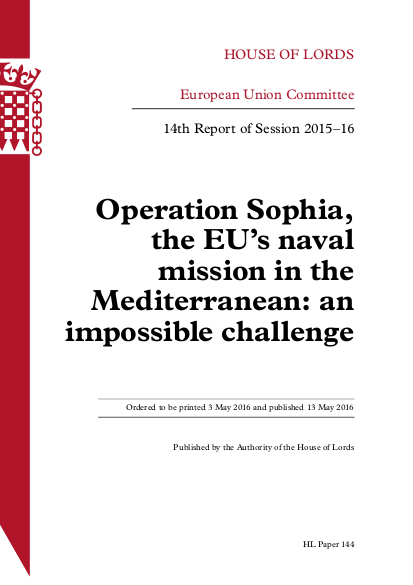
“Migrants in boats are symptoms, not causes, of the problem.”
Since 2014, Europe has been struggling to respond to an exceptional number of irregular but voluntary migrants2 seeking to cross European borders. On 19 April 2015, off-the-coast of the Italian island of Lampedusa, a boat carrying nearly 700 migrants capsized and almost all its passengers drowned. The Lampedusa tragedy changed EU policy. Four days later, the European Council pledged to take steps to prevent further loss of life at sea, fight the people smugglers and prevent illegal migration flows. In May, a new naval mission—Operation Sophia—was deployed in the central Mediterranean. It currently patrols a vast area of the high seas off the coast of Libya to Italy, gathering information, rescuing migrants, and destroying boats used by smugglers.
Critics suggested that search and rescue activity by Operation Sophia would act as a magnet to migrants and ease the task of smugglers, who would only need their vessels to reach the high seas; these propositions have some validity. On the other hand, search and rescue are, in our view, vital humanitarian obligations. We commend Operation Sophia for its success in this task.
The mission does not, however, in any meaningful way deter the flow of migrants, disrupt the smugglers’ networks, or impede the business of people smuggling on the central Mediterranean route. The arrests that Operation Sophia has made to date have been of low-level targets, while the destruction of vessels has simply caused the smugglers to shift from using wooden boats to rubber dinghies, which are even more unsafe. There are also significant limits to the intelligence that can be collected about onshore smuggling networks from the high seas. There is therefore little prospect of Operation Sophia overturning the business model of people smuggling.